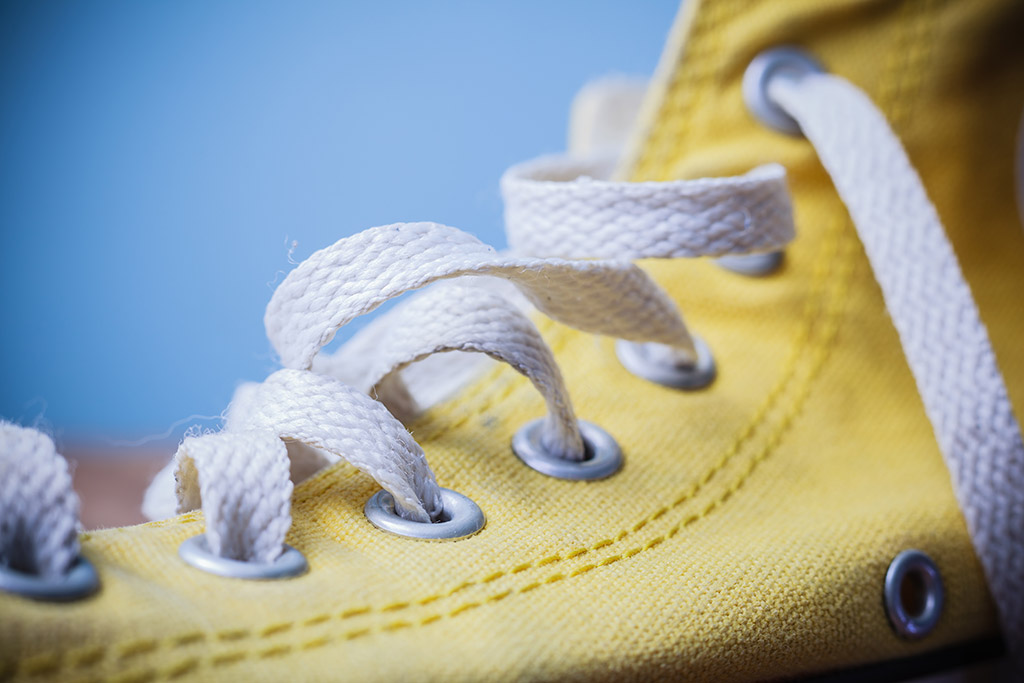Elastic shoelaces vs. traditional shoelaces
The characteristics of elastic shoelaces
Advantages of elastic shoelaces
Elastic shoelaces are becoming increasingly popular due to their convenience and adaptability. Made from stretchy materials such as spandex or elastane, these laces allow shoes to be quickly put on and taken off without having to re-tie them. This is especially beneficial for children, seniors and athletes looking for a quick and easy fit.
In addition to their ease of use, elastic laces provide a personalized fit. They stretch and contract with the movements of the foot, providing increased comfort and reducing pressure points. This can help prevent blisters and pain, especially for long-distance runners and walkers.
The disadvantages of elastic shoelaces
However, elastic shoelaces are not without their drawbacks. Their elasticity can sometimes lead to a loss of support and stability, especially during activities requiring firm foot support, such as hiking or high-intensity sports. Additionally, over time, elastic materials can lose their elasticity, requiring more frequent replacement than traditional laces.
Elastic shoelaces may also be less aesthetically pleasing, as their appearance may not be suitable for all shoes, especially formal or office shoes. They are often perceived as less elegant, which can limit their use to more casual or sporty contexts.

The characteristics of traditional shoelaces
Advantages of traditional shoelaces
Traditional laces, usually made from materials like cotton, polyester or leather, are valued for their reliability and durability. They provide precise control over tension and tightening, allowing for a firm and secure fit. This is especially important for activities requiring maximum support, such as hiking, soccer or tennis.
In terms of style, traditional shoelaces come in a wide range of colors, textures and lengths, making them easy to match with different types of shoes. They are also seen as more appropriate for formal occasions and professional environments, offering a polished and classic appearance.
The disadvantages of traditional laces
Despite their many advantages, traditional shoelaces have certain disadvantages. They require manual lacing each time they are used, which can be tedious for some people, especially those with motor difficulties or dexterity issues. Additionally, traditional shoelaces can become untied during use, which can lead to falls or accidents, especially during sporting activities.
Traditional laces can also cause pressure points or discomfort if the tightening is not evenly distributed. They require regular maintenance to prevent wear and tear and should be replaced when they become frayed or broken.
Comparison and choice between elastic and traditional shoelaces
Factors to consider
The choice between elastic shoelaces and traditional shoelaces depends on several factors, including the type of activity, the level of support needed, and personal preferences for comfort and style. For activities that require a quick fit and some flexibility, like running or indoor workouts, elastic shoelaces can be a great choice. Their ability to adapt to the movements of the foot without requiring manual lacing is an undeniable advantage.
On the other hand, for activities that require a firm, secure fit, such as hiking, racquet sports, or even a work day in formal shoes, traditional laces are generally preferable. Their ability to provide a precise fit and lasting support makes them ideal for these situations.
Adaptability and daily use
For daily use, the choice will also depend on lifestyle and aesthetic preferences. Elastic laces are convenient for those seeking convenience and casual comfort, while traditional laces are more suitable for those who favor a classic, formal style. Ultimately, having a pair of each type can provide the flexibility to adapt to different situations and needs.
